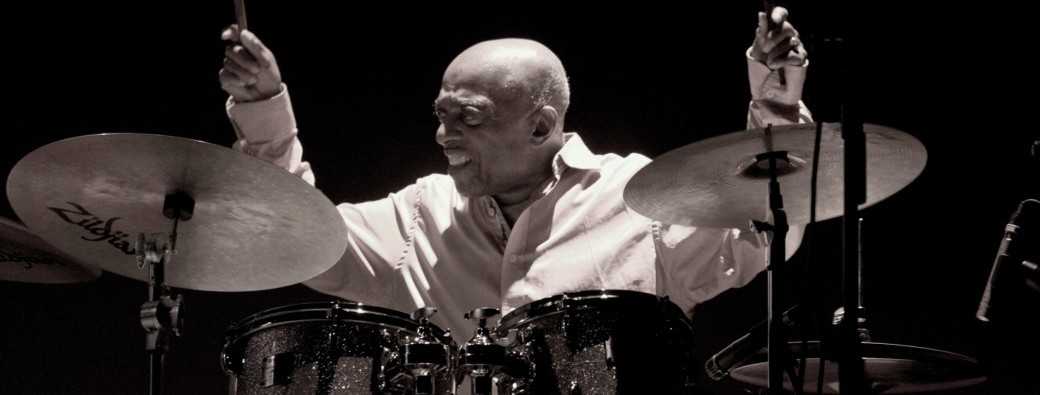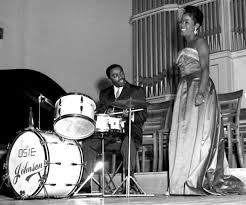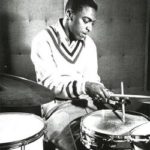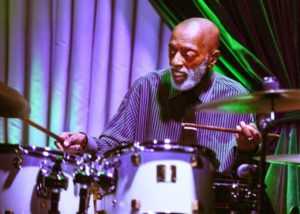News
Roy Haynes: Snap Crackle Bids Farewell at 99

The music world was saddened recently by the loss of the great Quincy Jones. And yesterday, November 12, 2024, another legend passed away: the “Snap Crackle” Roy Haynes.
Roy Haynes, affectionately known as “Snap Crackle” for his sharp, crisp drumming style, is celebrated as one of jazz’s most innovative and enduring drummers. Born in 1925 in Boston, Haynes’s career spans over eight decades, making him one of the longest-standing figures in jazz history. Known for his flexibility, agility, and rhythmic mastery, Haynes was a pivotal force behind some of the genre’s most influential recordings, playing with legends like Charlie Parker, John Coltrane, and Miles Davis. His distinct approach to rhythm, characterized by spontaneous, “snapping” accents and sophisticated timing, pushed jazz drumming into new territory and set a high standard for both swing and bebop drummers.
 Early Life and Influences
Early Life and Influences
Roy Owen Haynes was born on March 13, 1925, in Roxbury, Massachusetts, into a family with Caribbean roots. Raised in a musically inclined household, Haynes displayed a natural sense of rhythm from a young age. He started playing drums in his teens, heavily influenced by the swing and big band sounds of the time. His early idols included “Papa” Jo Jones, Chick Webb, Shadow Wilson and Kenny Clarke, Max Roach, and Art Blakey, but he soon developed his own approach, aiming to bring more personal expression and inventiveness into jazz drumming.
Career Beginnings
In 1945, Haynes began his professional career, joining saxophonist Luis Russell’s band, which laid the groundwork for his early success. His drumming soon caught the attention of major jazz figures, and by 1947, he was playing with Lester Young, whose laid-back, inventive style left a deep impact on Haynes. From there, he moved on to collaborations with Charlie Parker, where he became a cornerstone of Bebop’s rapid, complex style. Haynes’s ability to navigate Bebop’s fast tempos and unconventional rhythms brought him widespread recognition.

Rise to Fame: Collaborations and Key Albums
Throughout the 1950s and ’60s, Haynes’s career soared as he collaborated with some of the greatest names in jazz. He worked with pianist Bud Powell, trumpeter Miles Davis, and saxophonist Stan Getz, among others, showcasing his ability to adapt his style to fit different sounds. He filled in as Elvin Jones’ substitute in the John Coltrane Quartet from 1961 to 1965. His works with John Coltrane marked one of the most creative periods in his career, where Haynes’s rhythmic experimentation added intensity and depth to Coltrane’s compositions. His unique, “snapping” snare accents and his ability to balance subtlety with explosiveness also shone through in recordings with Chick Corea, creating the genre-blending jazz fusion sound of the 1970s.
Drumming Style
Roy Haynes’s drumming style is defined by his distinctive “snap”—a sharp, syncopated accent that punctuates his playing. His style combines elements of swing, bebop, and modern jazz, giving him the versatility to adapt to various musical contexts. Haynes uses the drums melodically, often interacting with soloists in real time, adding spontaneous fills, and incorporating offbeat accents to create tension and excitement. Known for his light, yet assertive touch on the snare and his seamless ride cymbal work, Haynes’s approach to rhythm is conversational, pushing the boundaries of tempo and texture without sacrificing groove.
Legacy and Influence
Roy Haynes’ impact on jazz drumming is immeasurable. He’s considered a pioneer for bridging early swing styles with bebop and post-bop, influencing countless drummers, including Elvin Jones, Jack DeJohnette, and even rock drummers like John Bonham. Known as the “father of modern jazz drumming,” Haynes opened the door for a more expressive, interactive drumming style, one where the drummer could take on a leading, melodic role in a jazz ensemble. His adaptability and innovative approach have kept him relevant across multiple generations of jazz, even as he continued to perform well into his 90s.
Death
November 12, 2024, Leslie Haynes-Gilmore, Roy Haynes’ daughter, confirmed his death following a brief illness. He was 99.
Here are a few videos of the Legend, “Snap Crackle” Roy Haynes
Roy Haynes – Stan Getz Quartet – Steve Swallow – Gary Burton 1966
Roy Haynes – Blue ‘n Boogie (1973)
Roy Haynes with Chick Corea
JAZZ Stories
Roy Haynes stands out because of his rhythmic “snap” and the way he uses drums as a storytelling device. His drumming is both melodic and percussive, often adding layers of conversation to jazz compositions. Haynes’s ability to change tempos, create offbeat accents, and play with a level of spontaneity makes him an icon of innovation. Known as “Snap Crackle,” he is a drummer who plays as if he’s speaking through his kit, transforming jazz drumming from background rhythm into a leading voice.
“It’s the way he breaks up time,”. “The accents he does with his different limbs are more complex than anything that came before him. The syncopation that he developed influenced all modern drummers. It sounds natural because it is natural. What he plays on the drums is the way he lives, the way he talks, the way he walks.”
– David Kikoski (his longtime pianist) to New York Times in 2000

 Early Life and Influences
Early Life and Influences

